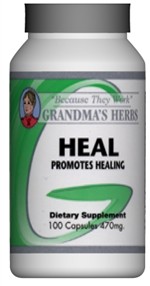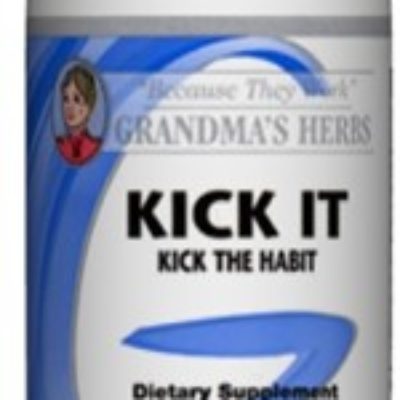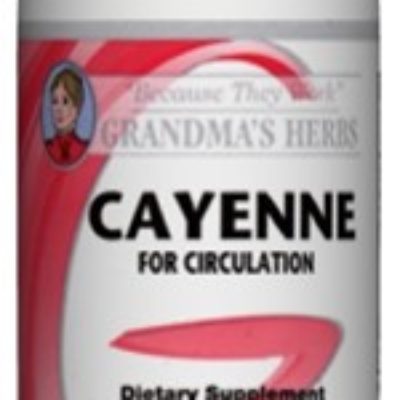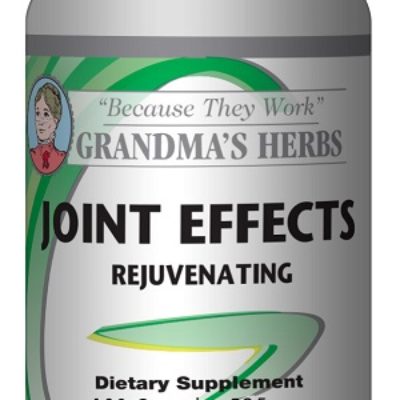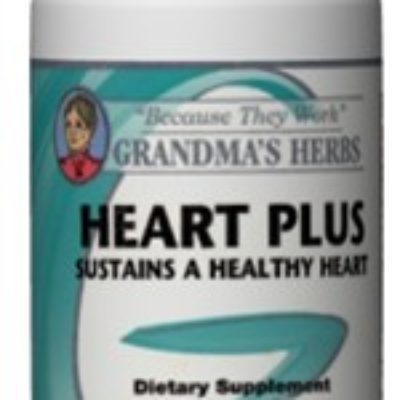Description
Grandma’s Herbs – Heal
(Promotes Natural Healing – Flesh, Bones, Cartilage)
(100 Capsules – 470 mg)
(This product has been discontinued by the manufacturer and is no longer available)
Grandma’s Herbs HEAL is an herbal remedy that promotes natural healing. This herbal supplement is designed to soothe, build and promote the natural healing of the flesh, bones and cartilage. Many people have had great success using HEAL.
What’s Included: (1) Bottle of Grandma’s Herbs HEAL – 100 Capsules – 470 mg
Product Features:
- Promotes natural healthy healing for bone, cartridge and flesh.
- Contains wonderful herbs with natural sources of vitamins and minerals that promote natural healthy healing.
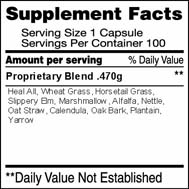
Recommendation: (4) Capsules four (4) times a day for healing purposes.
Ingredients: Heal All (herb), Wheat Grass (herb), Horsetail Grass (herb), Slippery Elm (bark), Marshmallow (root), Alfalfa (leaf), Nettle (root), Oat Straw (herb), Calendula (flower), Oak (bark), Plantain (leaf), Yarrow (flower)
Overview
HEAL was designed to promote the natural healing and healthy maintenance, of flesh, bones and cartilage. And wow does it work well…
What’s in Grandma’s Herbs HEAL to make it so special and effective?
Wheatgrass:
- Wheatgrass is a natural source of vitamins and minerals (a few of which are antioxidants) including:
- Vitamins A, E, C, K and B6.
- Calcium.
- Selenium.
- Magnesium.
- Iron.
- Wheatgrass is also high in chlorophyll which is very beneficial to the entire body.
- Research in the 1940s indicating that chlorophyllin slowed the growth of certain anaerobic bacteria in the test tube and accelerated the healing of experimental wounds in animals. This led to the use of topical chlorophyllin solutions and ointments in the treatment of persistent open wounds in humans. (Kephart JC. Chlorophyll derivatives – their chemistry, commercial preparation and uses. Econ Bot. 1955;9:3-38.)
- During the late 1940s and 1950s, a series of largely uncontrolled studies in patients with slow-healing wounds, such as vascular ulcers and pressure (decubitus) ulcers, reported that the application of topical chlorophyllin promoted healing more effectively than other commonly used treatments. (Bowers WF. Chlorophyll in wound healing and suppurative disease. Am J Surg. 1947;73:37-50. & Carpenter EB. Clinical experiences with chlorophyll preparations. Am J Surg. 1949;77:167-171.)
Horsetail Grass
- Horsetail (Equisetum arvense) is a medicinal herb that dates back to ancient Roman and Greek times. It was traditionally used to stop bleeding, heal ulcers and wounds, and treat kidney problems.
- Horsetail has been suggested as a treatment for osteoporosis (thinning bone), because it contains silicon, a mineral needed for bone health.
- In one study, 122 Italian women took horsetail dry extract 270 mg twice daily. The women who took horsetail experienced improved bone density.*
- *Corletto F. [Female climacteric osteoporosis therapy with titrated horsetail (Equisetum arvense) extract plus calcium (osteosil calcium): randomized double blind study]. Miner Ortoped Traumatol. 1999;50:201-206.
- In one study, 122 Italian women took horsetail dry extract 270 mg twice daily. The women who took horsetail experienced improved bone density.*
- Horsetail Grass is high in silica. The body needs silica to help with the assimilation of calcium, which assists with healing.
- Accumulating evidence over the last 30 years strongly suggest that dietary silicon is beneficial to bone and connective tissue health and we recently reported strong positive associations between dietary Silicon intake and bone mineral density in US and UK cohorts. (National Institutes of Health Article)
Slippery Elm:
- Slippery elm (Ulmus fulva) has been used as an herbal remedy in North America for centuries.
- Native Americans and pioneers would peel its slimy, red inner bark from twigs and branches and use it as a remedy for many common ailments, like fevers, wounds, and sore throats.
- The traditional list of uses is as follows; healing salves for wounds, boils, ulcers, burns, and skin inflammation. It was also taken orally to relieve coughs, sore throats, diarrhea, and stomach problems.
- Slippery Elm possesses an abundance of mucilage properties, which may soothe irritation, draw out impurities and promote natural healing.
